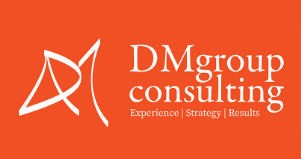Spring is in the air! Do we dare hope that COVID is on the downhill slide?
Just about everyone is ready to be around other people and open-air restaurant patios are one of the best places to Cultivate donors.
Now that you’ve identified your prospective donors, it’s time to contact them and start your Cultivation. Oftentimes we think that Cultivation is only for prospective donors, but current and lapsed donors need to be Cultivated, too.
What actually is Cultivation? According to Kim Klein’s article, Donor Cultivation: What It Is and What It Is Not, “Cultivation is where you treat the donor like a whole person…. Cultivation is what you do to build the loyalty and commitment of the donors to the organization.”
There are many ways to Cultivate a donor. It can be as basic as a thank letter for a donation. Of course, the best Cultivation method is an in-person visit where you, the fundraiser, listen to the donor, not ask them for money.
During the month of March my weekly zoom webinar, About Fundraising, will look at Cultivation.
- Events
- Guest, Emily Hancock
- Major Gifts
- Mid-Level and Recurring
- Open Mic Q and A
Events can be very successful Cultivation tools if they are well planned and if there is follow-up by your fundraising team and board members. Board members can be very effective if given the chance and the support. Honestly, a prospective donor would much rather talk with a peer rather than a staff professional.
Small intimate gatherings at the home of a board member or other volunteer or donor is the best place to start cultivating prospective donors. Why? Because the guests are friends, colleagues, and family members of the hosts. A home is better than a ballroom when you’re sharing the story of your mission.
We’ll talk about the pros and cons of various events during our About Fundraising this month and you can see the replay on our YouTube channel.
Everyone wants major donors but oftentimes I’ve found that no one has defined the threshold for major gift donors. Is it one thousand or ten dollars? The quick way to determine this is to find your average gift for a set period of time, like your last two completed fiscal years. I also like to find the median gift for the same time period and choose a dollar value between the average and median.
Once you have that dividing line, then you know who should be in your portfolio and you can create a plan for cultivating them.
Cultivation is not limited to major gift donors. Consider how you can Cultivate your mid-level and recurring donors. Some of these donors have been very loyal, longstanding donors with little to no Cultivation or stewardship. We’ll talk about some of the things you can do to bring these donors along and maybe even increase their giving.
What are your questions and concerns about Cultivating donors? Sometimes we talk about these different aspects of fundraising, assuming everyone is on the same page, but that’s not always the case. March 31st at noon Central Time will be that opportunity for you to ask any question you’ve ever had about cultivating donors.
Join me every Thursday at noon, CST, for About Fundraising and learn more about Cultivation during the month of March.
At DMGroupConsulting, our goal is to help you achieve your goals. Contact us at https://dmgroupconsulting.com/contact/.




